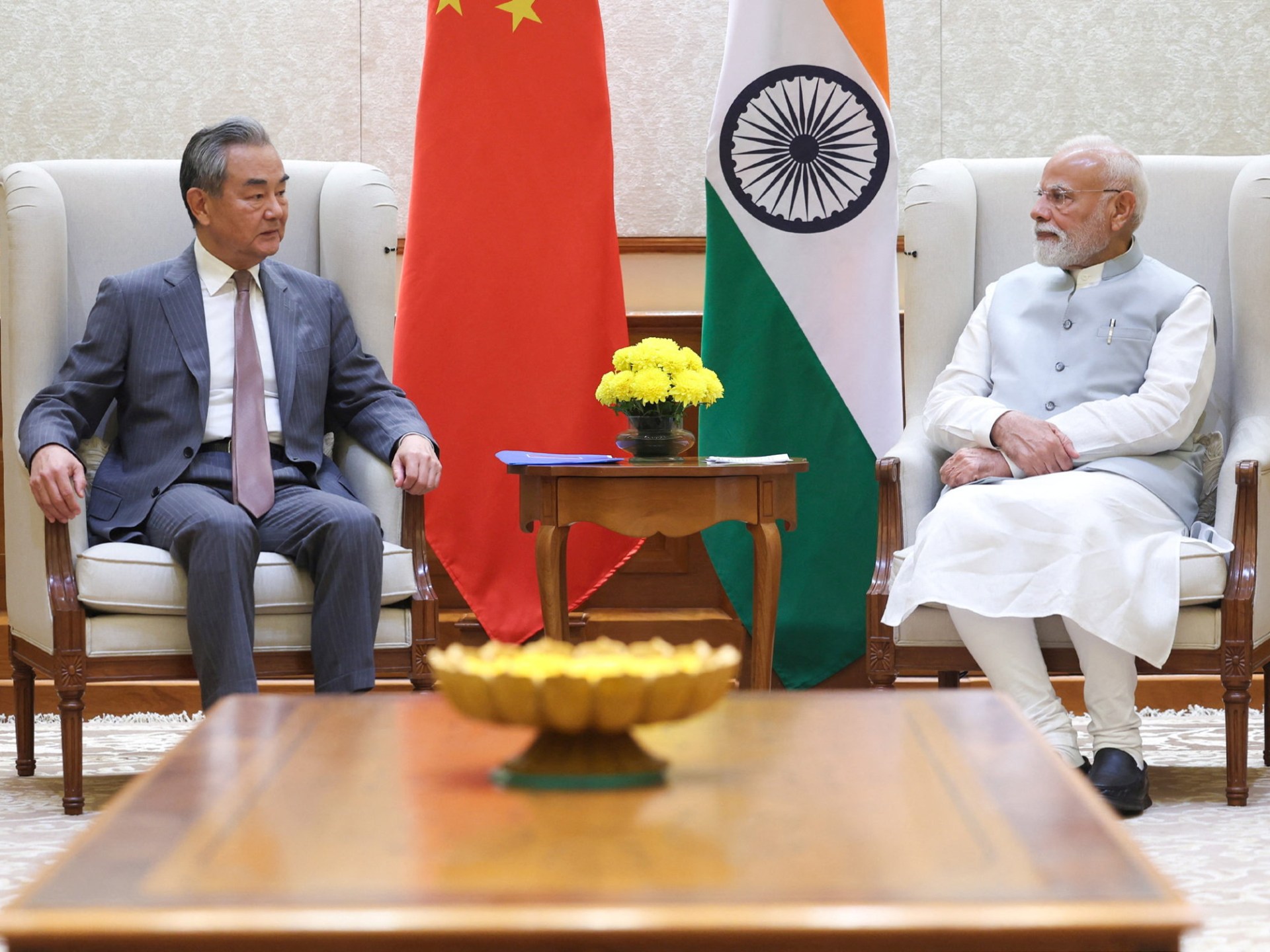After years of tense between the nuclear-armed Asian powers and as the two countries navigated a shifting global economy sparked by tariffs by US President Donald Trump, Indian Prime Minister Narendra Modi met with Chinese diplomat Wang Yi and expressed gratitude for the “steady progress” being made in enhancing the bilateral relationship.
After meeting with Chinese Foreign Minister Wang on Tuesday in New Delhi, Modi added that he “respect for each other’s interests and sensitiveness” in a statement on social media. According to China’s Ministry of Foreign Affairs, the nations are on a “steady development trajectory” and should “trust and support” one another.
I’m pleased to meet Wang Yi, the foreign minister. India-China relations have steadily improved since meeting with President Xi last year in Kazan, driven by mutual respect for one another’s goals and sensibilities. On the SCO… pic, I’m looking forward to our next meeting in Tianjin. twitter.com/FyQI6GqYKC
Wang arrived in India on Monday, meeting with Ajit Doval, the country’s national security adviser, and foreign affairs minister Subrahmanyam Jaishankar regarding the country’s disputed Himalayan border.
Wang and Doval had discussions about “deescalation, delimitation, and boundary affairs,” according to the Indian Ministry of External Affairs.
Security forces clashed along the border in 2020, which caused relations to deteriorate. The worst violence in decades resulted in the death of 20 Indian soldiers and four Chinese soldiers, putting an end to important political conversations.
The people of our two countries were not interested in the setbacks we experienced in the last few years. We are encouraged by the restored stability in the borders, Wang said on Monday.
His office reiterated India’s commitment to a “fair, reasonable, and mutually acceptable resolution of the boundary question,” stressing the importance of maintaining peace and tranquillity along the border.
Political compromise
After US President Donald Trump imposed severe tariffs on India for continuing to purchase Russian oil, which the US claims is assisting Moscow’s war machine, New Delhi and Beijing are at odds with this reconstruction.
India has long been a key ally of the US, serving as a counterbalance to China’s influence in Asia, and is a member of the US-Australia and Japan Quad security alliance.
Trade, diplomacy, and air travel were affected by the sluggish relations following the deadly 2020 conflict between troops in the Ladakh region, where both parties deployed tens of thousands of security forces in border areas.
Since then, some progress has been made.
India and China made a border patrol pact last year, and some border regions had additional forces withdrawn. By constructing roads and rail networks, both nations continue to fortify their borders.
The nations have discussed easing some trade restrictions, citizen mobility, and business visa requirements in recent months.
Beijing granted pilgrims from India the right to visit Tibetan holy sites in June. Both parties are attempting to restore direct flights.
India and China were discussing restarting trade along their 3, 488km (2, 167-mile) border last week, according to Randhir Jaiswal, spokesman for the country’s foreign ministry.
Source: Aljazeera

Leave a Reply